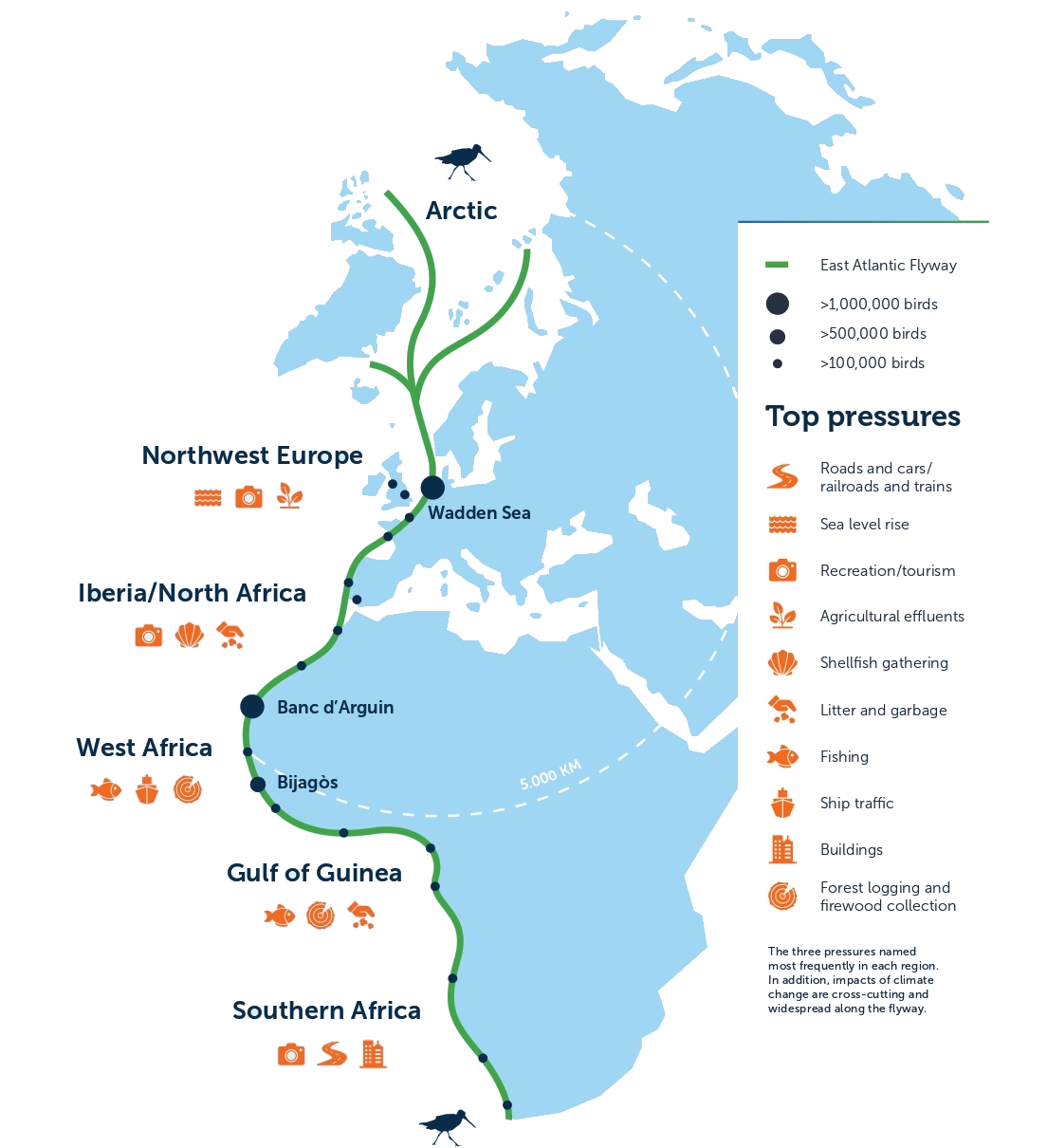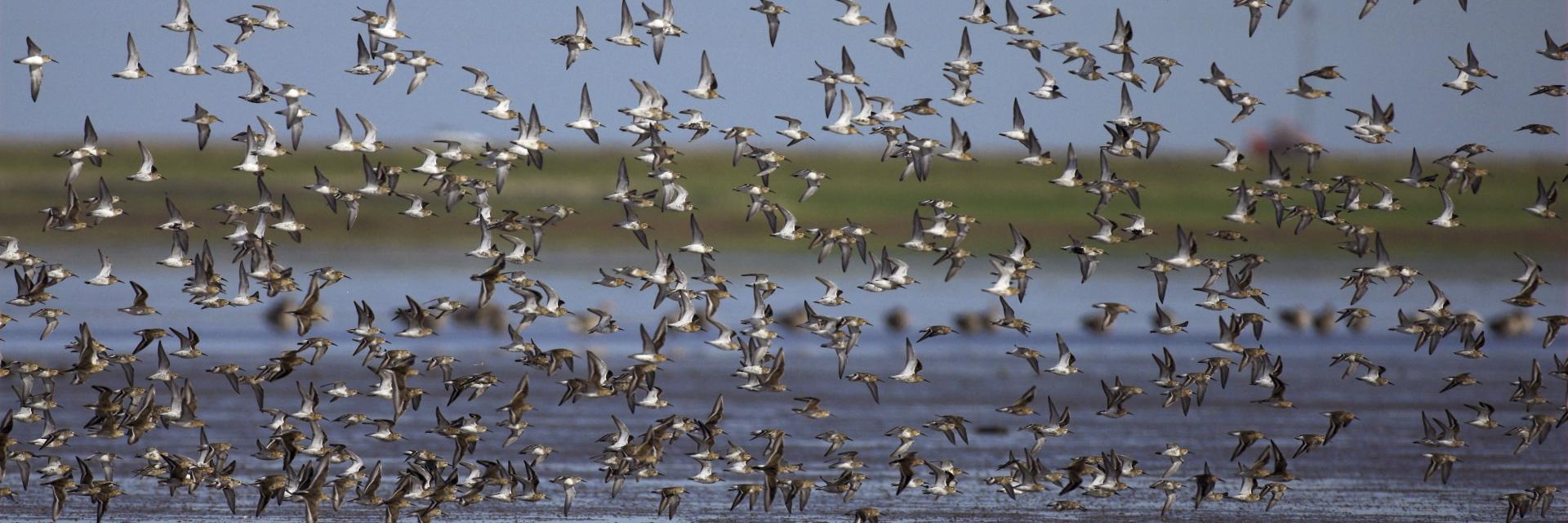East Atlantic Flyway
The East Atlantic Flyway (EAF) extends from the Arctic to the southern tip of the African Atlantic coastline. Every year millions of waterbirds migrate from their breeding grounds as far north as the Siberian tundra to their non-breeding (wintering) sites in Western and Southern Africa, making use of stopover wetland sites along the coastline. The Wadden Sea World Heritage site is at the heart of the EAF and is used as a breeding, wintering and stopover site. Other key sites along the EAF, which support a large percentage of the flyway populations, are the Banc d'Arguin in Mauritania and the Bijagós Archipelago in Guinea-Bissau. The flyway also supports numerous waterbird species that breed in Africa, many of which are also migratory, moving along Africa’s Atlantic coastline. Key breeding sites include the Saloum Delta and Djoudj National Parks in Senegal.

Although flyway populations along the EAF are doing reasonably well compared to other flyways, 30% of the 83 monitored migratory waterbird populations showed a negative trend in the long term. The short-term trends (10 years) even showed some strong declines. In particular, waders had less favourable trends than other taxonomic groups, with strong declines occurring in species breeding in the Siberian Arctic.
The threats migratory waterbirds are facing along the EAF are manifold and often directly linked to human activities at coastal wetlands. Fishing is a key activity in coastal areas, with overfishing being widespread. Agricultural activities and marine litter are also reported for many sites. Geographical differences exist in threats like forest logging, infrastructural developments and recreational use, linked to differences in socio-economic developments. While the relative importance of different threats in relation to the conservation of migratory waterbirds is unknown, it is clear that the climatic changes which are already widely felt along the flyway are going to worsen the situation for many flyway populations.

To counteract these threats, we need to work closely with partners along the entire flyway. The African-Eurasian Migratory Waterbird Agreement (short AEWA) is an intergovernmental treaty under the Convention for Migratory Species and has been signed by almost all countries along the EAF. The aim of the agreement is to establish coordinated conservation and management of migratory waterbirds throughout their entire migratory range. While this international governmental collaboration is key to coordinating conservation actions and developing a legal basis for them, the sustainability of our actions also depends on collaborations with partners on the ground. In many parts of the flyway, local livelihoods are directly linked to the status of wetlands which the migratory waterbirds depend on. Reducing the pressures on ecosystems by improving the economic and social situation of local communities will ultimately help migratory birds.

